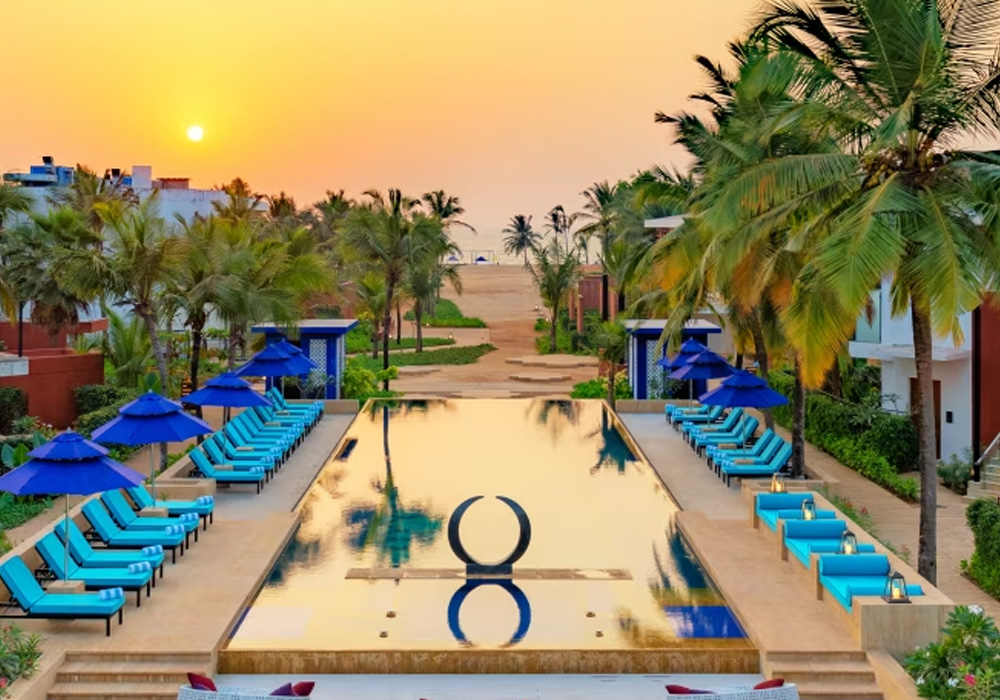In the southern tip of the northeast, Mizoram is a mesmerizing state in India engulfed with mighty mountains enveloped with verdant forests. Known for thick bamboo groves beaming with amazing wildlife, sheer cliffs, and breathtaking waterfalls, this enchanting land of the Highlanders and the Mizos is a wonderful tourist destination in India with many options to explore. Also ranking on the list of the most literate states, Mizoram scores as one of India's finest places to visit. Quite an idyllic state, it carries the legacy of an upscale historical and cultural heritage of mizoram. Aizawl is the capital; the city has managed to maintain its virginity as this side of India stays less explored. With an array of rugged terrains and gurgling rivers, Mizoram offers a plethora of options for nature lovers and adventure junkies.
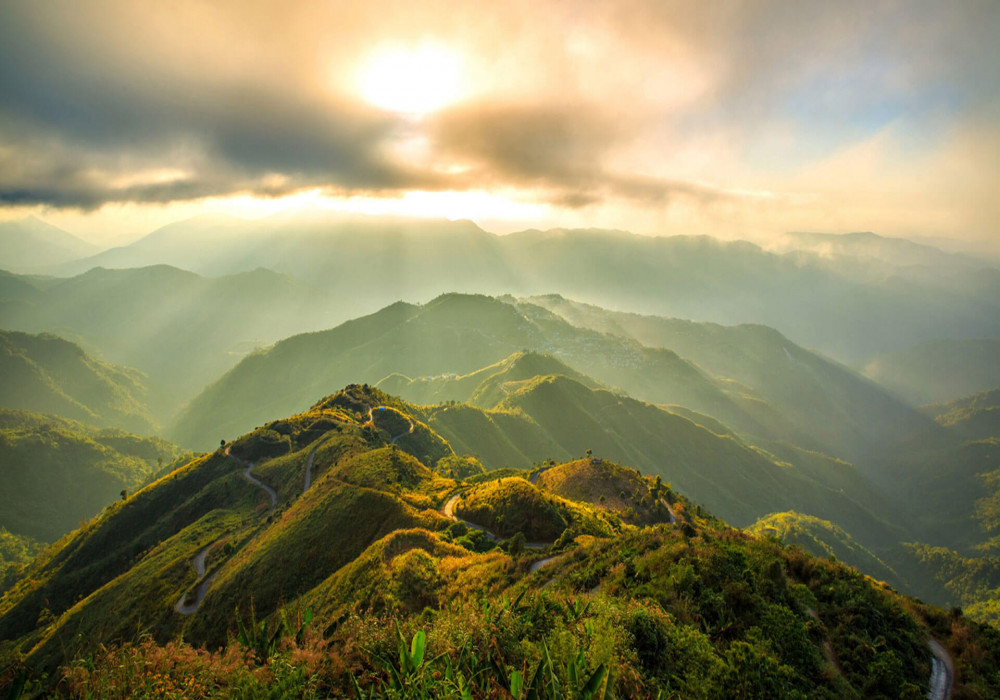
History of Mizoram
Independent India saw the emergence of the Lushai Hills district under the Government of Assam in 1947. The district became a union territory in 1972 known as Mizoram, which became a full-fledged federal state in 1986. Like most of the northeastern states of India, Mizoram was within Assam until 1972, after which it became a union territory. It became the 23rd state of India, a step above Union Territory, on 20 February 1987, with the Fifty-Third Amendment of the Indian Constitution, 1986. The 18th and 19th Century history of Mizoram is marked by many instances of tribal raids and retaliatory expeditions of security. Mizo Hills were a component of British India because of a proclamation in 1895. North and South Hills were united into the Lushai Hills district in 1898, with Aizawl as its headquarters.
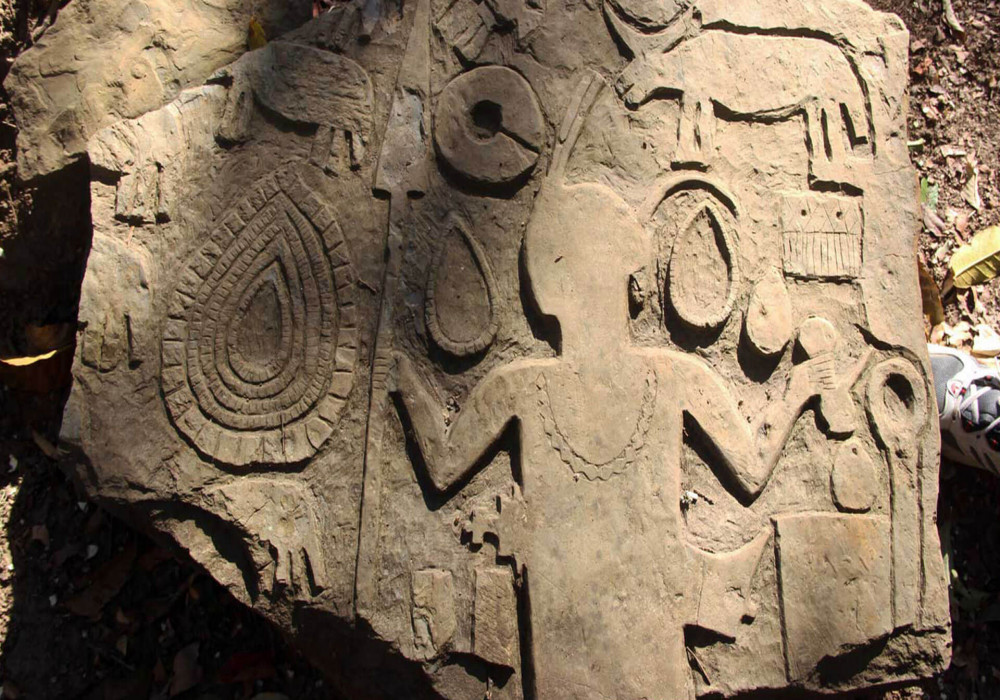
Five major tribes and eleven minor tribes comprise the Mizos under the common name of Awzia. The five major tribes are- Lushei, Ralte, Hmar, Paihte, and Pawi (or Poi). Though their respective dialects were maintained intact, the remaining eleven minor tribes lost their original dialects due to getting diluted with the larger tribes. The original Mizos who migrated to India were referred to as Kukis, followed by the second batch of immigrants, called New Kukis. The Lushais were the last batch of the Mizo tribes to migrate to India. As the Northeastern Reorganisation Act was implemented in 1972, Mizoram emerged as a Union Territory. As a sequel to the signing off of the historic settlement agreement between the Government of India and the Mizo National Front in 1986, it was granted statehood on 20 February 1987.
Culture of Mizoram
The Mizos are one of the important hill tribes within the Indian subcontinent. Their cultural beliefs and values have given them a definite Mizo identity. The vibrant culture of Mizoram is depicted through the traditional attires worn by Mizoram women, called the 'Puan.' Its beautifully intricate design and ideal fit make it the foremost sought-after dress for the people of mizoram culture. Mizo literature is scripted in Mizo twang, considered the state's principal language. The culture and tradition of mizoram are also evident in the state's music, dance, and festivals.
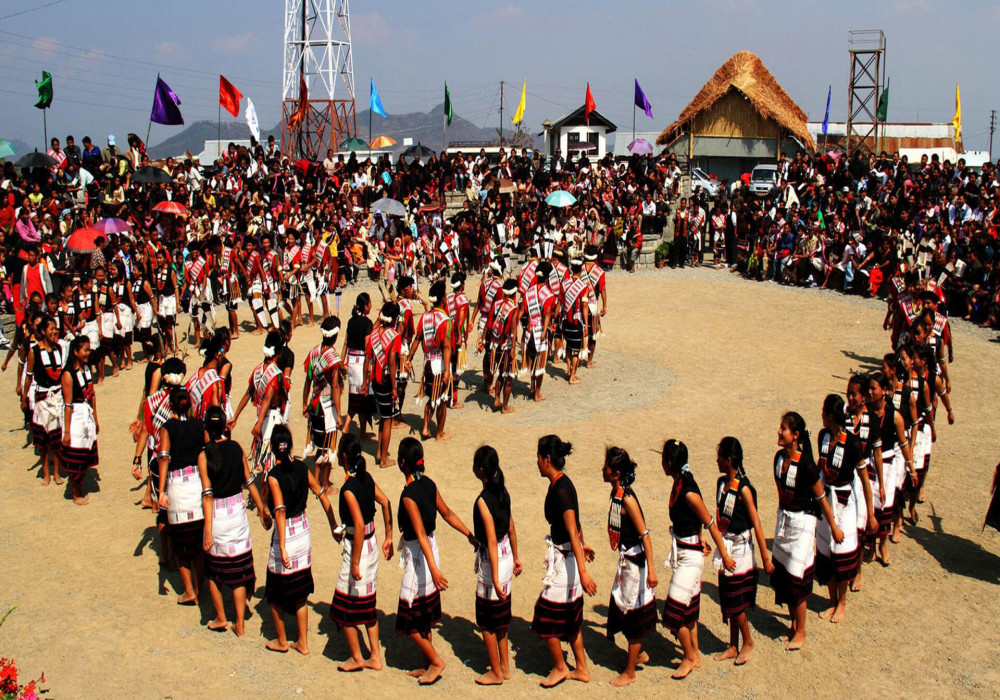
This language is developed mainly from the Lushai language, with significant influence from the Pawi, Paite, and Hmar languages. Musical instruments such as the drums, gong, and other native percussion instruments such as marimba, conga, etc., are quite prevalent in Mizoram. The culture of Mizoram also focuses on different dance forms like Cheraw, Khuallam, Chailam, and Sarlamkai. Traditional festivals in mizoram culture revolve around the different stages of Jhum cultivation or the seasons. Chapchar Kut, Thalfavang Kut, Mim Kut, and Pawl Kut are a variety of the key kuts. In all, the culture of mizoram and tradition is an amalgamation of festivity, celebration, liveliness, kinship, merriment, and, above all, preserving the ethnicity of the tribal community that is fundamentally entrenched.
Art and Handicraft of Mizoram
The art and culture of Mizoram are significant sectors of the state's industrial market. Bamboo, textiles, cane works, and basketry are some of the renowned handicrafts of mizoram culture that are beautifully crafted into fine furniture and commercial items. The womenfolk of the northeastern region, such as Champhai, Serchhip, and Siaha, are associated with weaving. Some souvenirs from Mizoram include unspun dum, puon pie, change upon, jaw upon, harm upon, listen, things upon, and zakuolaisen, bamboo and cane products such as jewellery. Basketry is also an important art and craft form that has gained predominance in this northeast Indian state.
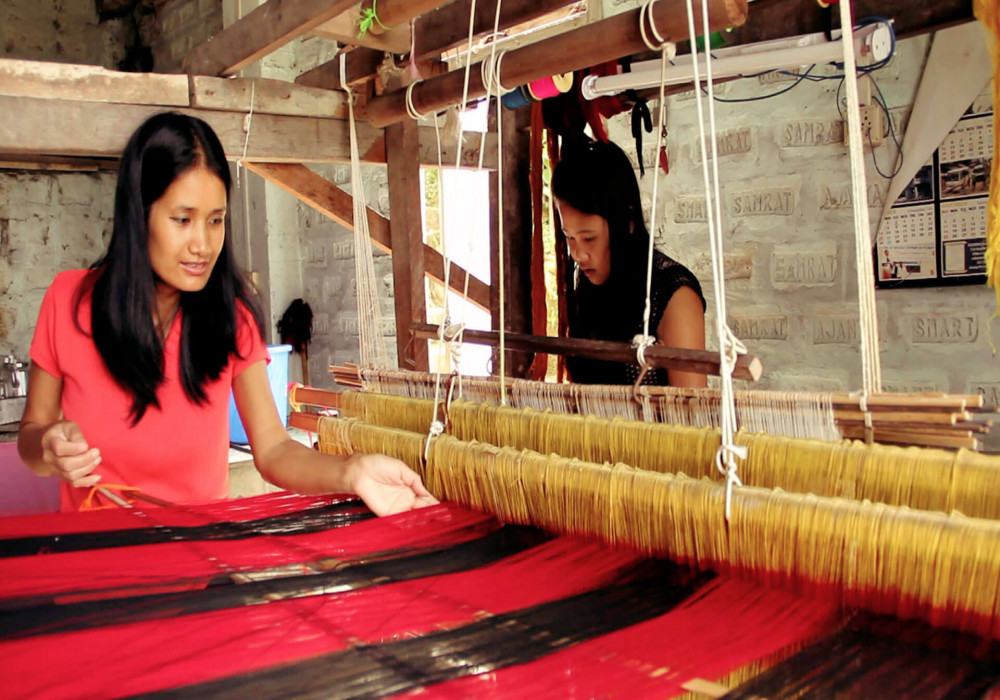
Canes are used to prepare hats and baskets of varied shapes and sizes, and they are very popular in this state of India. These multi-purpose baskets are useful for storing clothes, grains, vegetables, firewood, ornaments, and other valuable items. Fibres and leaves are also quite popular in this state. The handcrafted items of the region are exquisite, eco-friendly, and also pocket-friendly.
Food of Mizoram
India is the land of diverse and delectable cuisines, and the Famous food of Mizoram is one of the unique blends of North Indian and Chinese elements, both vegetarian and non-vegetarian dishes. Following the traditional customs, the food is served on banana leaves. Good quantities of fish and bamboo are usually used to prepare these dishes. Some of the mouth-watering delicacies from Mizoram include:
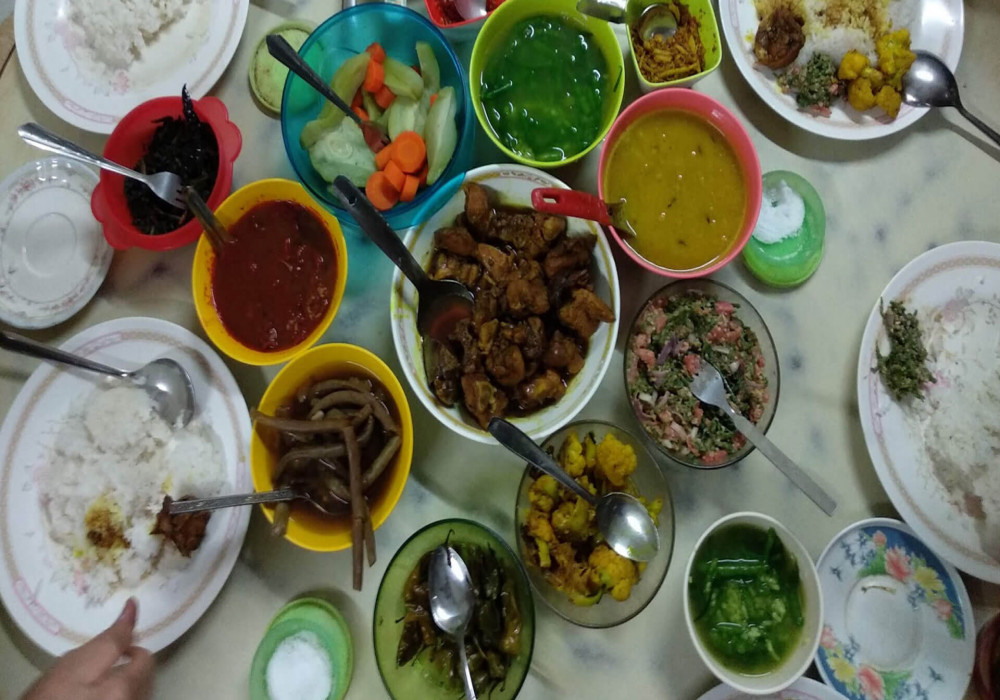
- Bai—Usually considered a soup before the main course, it is prepared using many locally available herbs and spices, pork, bamboo shoots, and steamed vegetables.
- Koat Pitha – A fried dish made from rice flour and bananas, is an ideal tea-time snack. Though it is crispy on the outside, it is soft and warm on the inside. Usage of bananas gives it a sweet taste.
- Bamboo Shoot Fry is a light dish made from bamboo, shitake mushrooms, vegetables, and herbs.
- Panch Phoran Tadka is a perfectly spiced vegetarian or non-vegetarian dish made from brinjal, pumpkins, and potatoes.
- Chhum Han is a famous vegetarian dish made with broccoli, cabbage, carrots, other steamed veggies, and a bit of ginger and tomatoes.
- Misa Mach Poora – A mouth-watering side dish made from grilled shrimp, prepared in lemon juice, mustard oil, orange zest, and assorted spices.
Things to do in Mizoram
Mizoram is certainly every traveller's dream destination. These places' unique culture, food, and ethnicity make them one of the favourite destinations in the history of Indian tourism. November to March are the ideal months to visit this site, with temperatures ranging from 11-30 degrees Celsius. Some of the important places to visit in Mizoram that will make you feel relaxed and rejuvenated are:
- Aizawl – Its capital, the most popular town
- Tamdil Lake - A picturesque destination
- Serchhip – Rural colourful extravaganza
- Champhai – The Adventure Hub
- Saiha – Known for the elephant's tooth
- Reiek – A destination in which one can bask in the sunlight
- Dampa Tiger Reserve – To venture into the Wild
- Kolasib – A riverside vacation
- Hmuifang – Provides a cultural exposition.
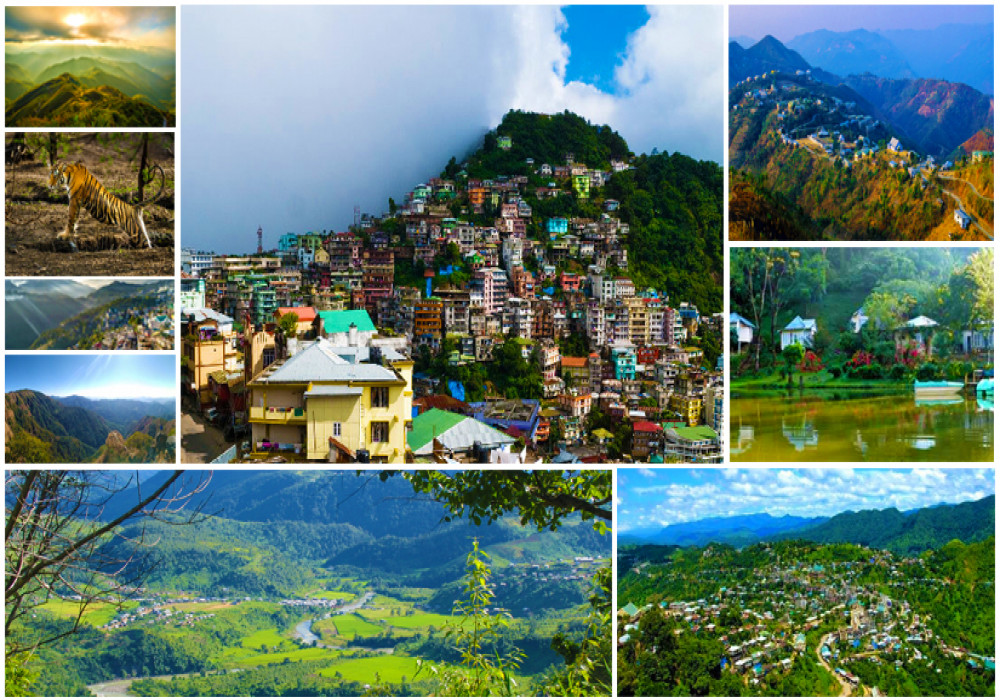
How to Reach Mizoram
To reach Mizoram, you must cover various distances depending on your starting location. For example, the distance from Kolkata is about 1,400 km; from Delhi, it's approximately 2,000 km; from Mumbai, around 2,900 km; and Bengaluru, it's about 3,300 km. Mizoram can be reached by air, train, and road.
By Air
The major airport in Mizoram is Lengpui Airport, located near Aizawl. This airport is well-connected to major cities in India.
- From Kolkata: Direct flights to Aizawl are available with fares starting from INR 3,000-4,500.
- From Delhi: Connecting flights to Aizawl via Kolkata or Guwahati, with fares starting from INR 5,000-7,000.
- From Bengaluru: Flights to Aizawl via Kolkata, with fares starting from INR 6,000-8,000.
Here is a list of Indian cities from where flights are available to Mizoram:
- Kolkata to Aizawl
- Guwahati to Aizawl
- Imphal to Aizawl
- Delhi (via connecting flights) to Aizawl
By Train
Mizoram has no direct railway connection, but the nearest major railway station is Silchar in Assam, about 170 km from Aizawl. From Silchar, you can take a taxi or bus to reach Aizawl.
- From Kolkata: Take a train to Silchar and then proceed by road to Aizawl.
- From Guwahati: Trains are available to Silchar, followed by a road journey to Aizawl.
- From Delhi and Mumbai: Take a train to Guwahati and then proceed to Silchar by train, followed by a road trip to Aizawl.
By Road
Mizoram is well-connected by a network of national highways. You can reach Mizoram by public buses, private taxis, or self-driven vehicles.
- From Silchar: 170 km via NH306 to Aizawl.
- From Guwahati: 470 km via NH306 and NH6 to Aizawl.
- From Shillong: 430 km via NH6 to Aizawl.
Travelers can enjoy scenic views along the road journey, making it an adventurous route to Mizoram.
Conclusion
So, when planning your next trip, Mizoram will be your much-desired destination in India. Savor the beauty of natural splendors and immerse yourself in tranquillity in a land that offers spellbinding vistas. This information about Mizoram highlights the specialty of Mizoram, including what the culture of Mizoram and Mizoram is famous for.
Frequently Asked Questions About Mizoram
Q1. What are the famous facts about Mizoram?
A: Mizoram is known for its rich cultural heritage, unique traditions, festivals like Chapchar Kut, and intricate handwoven textiles called 'Puans.' It is also one of India's most literate states and has a diverse ecosystem with abundant bamboo forests.
Q2. What is speciality of mizoram?
A: mizoram famous for its bamboo and cane crafts, traditional 'Puan' textiles, vibrant festivals, and unique cuisine that blends North Indian and Chinese influences.
Q3. What is Mizoram popularly known as?
A: Mizoram is popularly known as the "Land of the Hill People" or the "Land of the Mizos.
Q4. What is the special name of Mizoram?
A: Mizoram is often called the "Land of the Highlanders" due to its mountainous terrain and the native Mizo people who reside there.
Q. what is the culture of mizoram
A. Mizoram's culture blends tribal traditions and Christianity, known for festivals, dances like Cheraw, and strong community values. Music and craftsmanship are key aspects.

